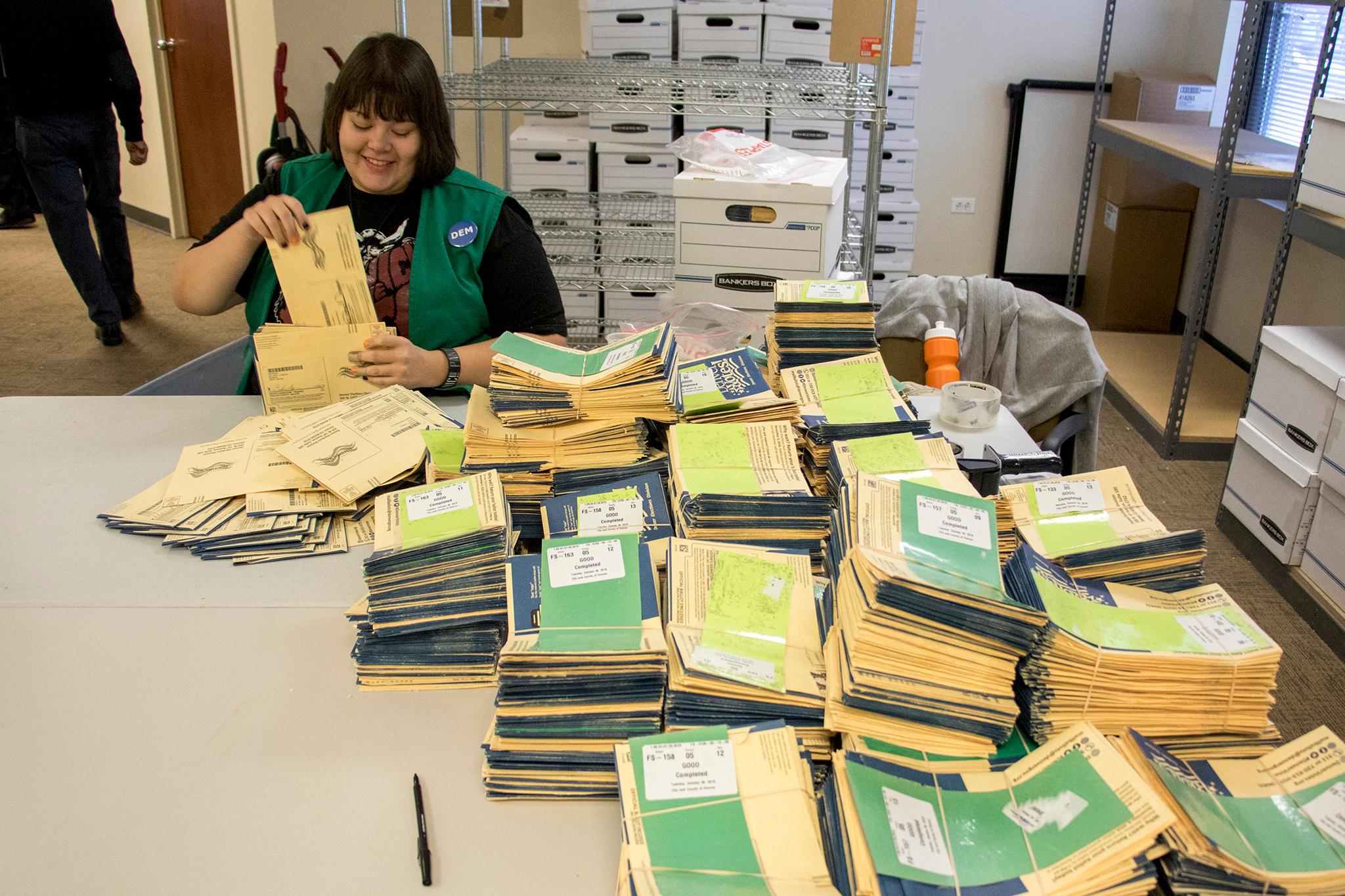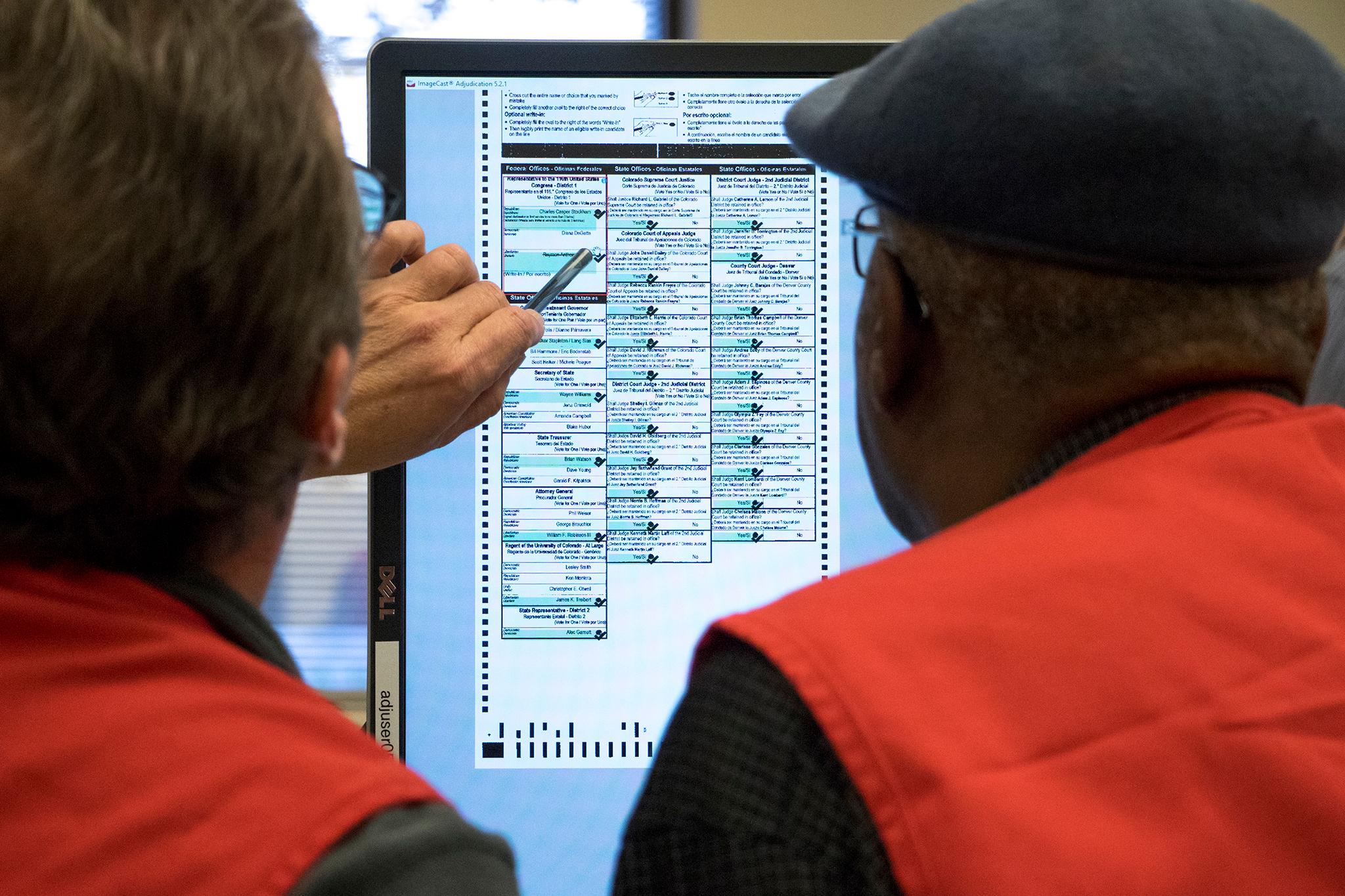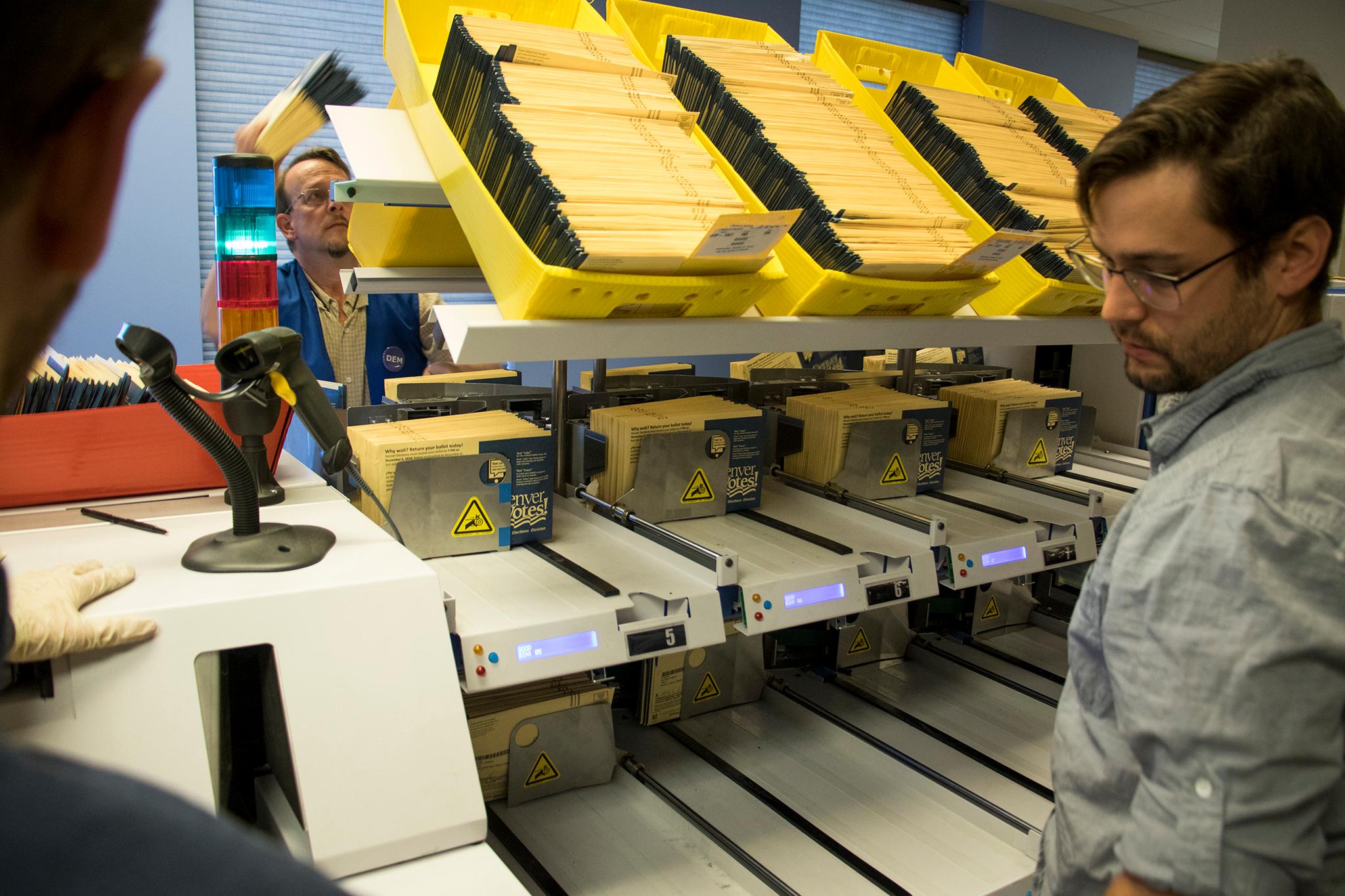With less than a week before election day, nearly 1 million Coloradans have returned their ballots for next week’s election. The latest numbers from the Secretary of State’s office show 951,431 people have cast their ballots as of Wednesday morning.
It’s a nearly even split between Democrats (331,263) and Republicans (331,706), with unaffiliated voters (277,458) also showing large return numbers. Just 443 votes are currently separating the two major-party voting blocs.
Ryan Winger of Magellan Strategies, a polling firm whose numbers are slightly different than the Secretary of State's office figures, said in a ballot return report on Wednesday that turnout among Dems and unaffiliated voters continues to rise compared to the 2014 numbers.
“Clearly, Democrats are voting earlier than they did in 2014, with 329,500 ballots returned compared to just 294,000 in 2014,” Winger writes, using his polling firm’s numbers. “This trend holds for most of the top twelve counties in Colorado, with the exception of Pueblo.”
Denver County’s turnout numbers are slightly higher than they were four years ago. According to figures from the Secretary of State’s office, 99,939 ballots have already been returned here, compared to 94,509 during the comparable time in 2014.
Here’s what happens to your ballot after you send it in Denver.
Denver Elections Deputy Director of Elections Jocelyn Bucaro and spokesperson Alton Dillard on Wednesday took media on a tour of Denver’s ballot processing.
Each section includes paid election judges who sport different color vests depending on the area they work in and wear buttons with their party affiliations. All of the various steps include handling from Democrat, Republican and unaffiliated judges. Dillard said all of it takes place under 24/7 video surveillance.
First, most ballots arrive from the 24-hour drop boxes, which Bucaro said are collected every day, multiple times a day through election day (including weekends). Each box holds about 100 to 150 ballots.

The drop boxes with ballots are collected by bipartisan teams to ensure the ballot’s security.
“All the ballots are transported in secure boxes that are sealed,” Bucaro said. “All seals are verified on both ends, both when the seals are placed on the box in the field and then when they get back here, those seals are re-verified to ensure there's no tampering.”
The ballots are then taken into a receiving room where judges verify the seals on the transport boxes carrying the ballots. They remove the ballots from boxes and start arranging them in preparation for sorting and signature verification.
The signature verification process includes two steps: The first is running each ballot sleeve through a noisy counting machine that takes an image of the signatures and measures the ballot’s thickness to make sure it has all three cards.
After that, judges sitting across from the big counting machine view the signature image and compare the signatures to the one on file for the registered voter. Bucaro said the office has several reference signatures for voters to compare the signature to determine if it’s a match.
If a signature doesn’t match, the voter will be notified and given a chance to “cure” their ballot.
The ballots are removed from the envelope in the ballot preparation room. The ballots are run through a “slicer” machine that opens up the envelope and allows an election judge — who, due to the machine setup, can’t see identifying info on the envelope — to remove the ballot.

The ballots are then taken to tables where bipartisan teams of judges flatten them to prepare them for counting.
Finally, the ballots are taken into a counting room. Bucaro said ballots are scanned, taking a digital image of the ballot, to tabulate the votes on election night. Here, election judges can take a closer look ballots that are mismarked, have mistakes, have bubbles aren’t fully filled in or have other irregularities.
“Then they come to these computer terminals, for adjudication, where a bipartisan team will review each of those marks to determine the intent of the voter, using our voter intent guide and determine what that vote was meant to be,” Bucaro said.
Colorado has same-day voting, so yes you can procrastinate — but try not to. Here’s what you’ll need to register to vote on Election Day.
Dillard warned that due to Denver’s historically long ballot, you’ll end up experiencing a wait if you register in-person and cast your ballot on election day. You can register at the Denver Elections offices at 200 W. 14th Ave. or at voting centers.

The division’s Haul-N-Votes mobile voting center will also serve as a registration center on Election Day and will make a few stops around the city.
In order to register on Election Day, Dillard said you need a form of identification. Acceptable form of ID including a driver’s licenses, Colorado state ID, tribal ID, a pilot’s licenses or even a utility bill received within the previous 60 days. You can view a full list on the Secretary of State’s website.
If you still have your ballot, you need to drop it off at a 24-hour drop box or drop it off at a voting center next Tuesday. Do not mail it. At this point, it probably won’t get back to your county clerk’s office in time to be counted.














